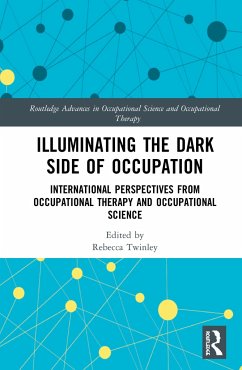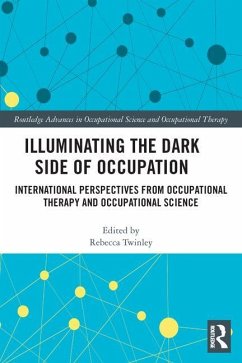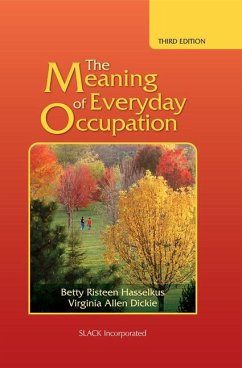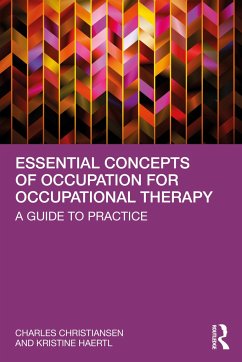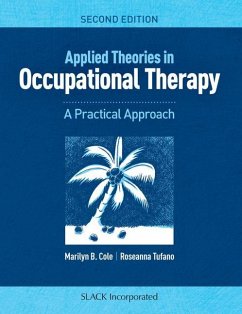
Gebundenes Buch
Human Occupation
Contemporary Concepts and Lifespan Perspectives
Herausgeber: Brown, Ted; Gustafsson, Louise; Isbel, Stephen
Versandkostenfrei!
Versandfertig in 1-2 Wochen

PAYBACK Punkte
109 °P sammeln!




This comprehensive textbook provides occupational therapy and science students and practitioners with a complete overview of the key human occupation concepts, as well as a range of perspectives through which occupational therapy and occupational science can be viewed and understood.
Ted Brown is Professor of Occupational Therapy and Undergraduate Course Director in the Department of Occupational Therapy at Monash University - Peninsula Campus, Australia. Prior to this, he worked as an occupational therapy clinician for 16 years in Canada and Australia, primarily in the area of pediatrics. Stephen Isbel is Professor of Occupational Therapy at the University of Canberra, Australia. He has worked in the USA, the UK, and Australia, primarily in the areas of aged care, community care, and adult neurological rehabilitation. Louise Gustafsson is Professor and Lead of the Occupational Therapy Program at Griffith University, Australia. Her research aims to address occupational issues of older adults and individuals with neurological conditions. Sharon Gutman is a professor at Rutgers University in the Occupational Therapy Doctorate Program. Her body of work has primarily addressed the development and assessment of interventions designed to help sheltered homeless people transition from homelessness to supported housing. Diane Powers Dirette is a professor in the Interdisciplinary Health Sciences PhD Program at Western Michigan University, and her research interests are focused on treatments for people with acquired brain injuries. Bethan Collins is the Head of Occupational Therapy at the University of Salford, UK. Bethan completed her primary degree in Occupational Therapy and her PhD at Trinity College Dublin, Ireland. Tim Barlott is an assistant professor in the Department of Occupational Therapy at the University of Alberta. His work pursues theory, practices, and collective processes that can be liberating for psychiatrized and other marginalized people.
Produktdetails
- Verlag: Taylor & Francis Ltd
- Seitenzahl: 676
- Erscheinungstermin: 17. September 2024
- Englisch
- Abmessung: 250mm x 175mm x 40mm
- Gewicht: 1306g
- ISBN-13: 9781032824642
- ISBN-10: 1032824646
- Artikelnr.: 70147082
Herstellerkennzeichnung
Libri GmbH
Europaallee 1
36244 Bad Hersfeld
gpsr@libri.de
Für dieses Produkt wurde noch keine Bewertung abgegeben. Wir würden uns sehr freuen, wenn du die erste Bewertung schreibst!
Eine Bewertung schreiben
Eine Bewertung schreiben
Andere Kunden interessierten sich für



